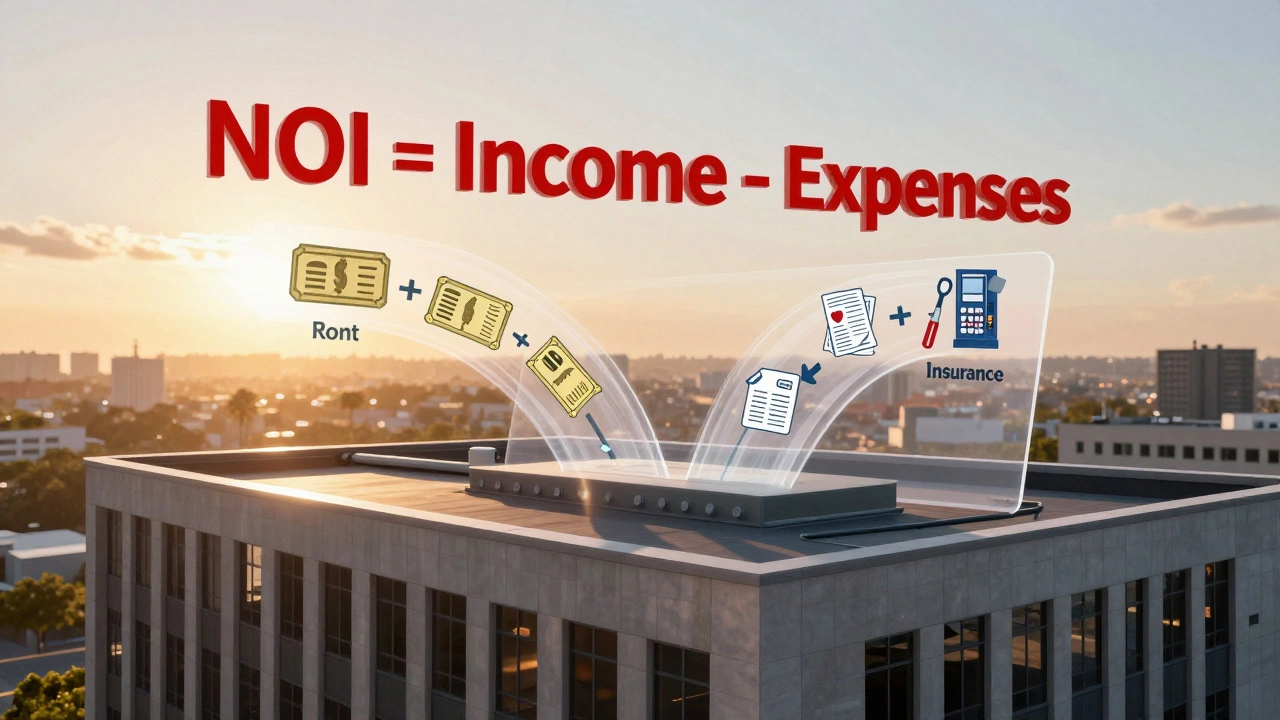Rent-to-own home arrangements often catch the eye of those eager to buy but unable to secure a mortgage due to financial constraints. They propose an alluring solution: live in the home now, with the option to buy it later. But, as tempting as this might sound, rent-to-own deals can be fraught with risks that aren't immediately obvious.
These agreements can come with extra costs and financial traps that could ultimately leave you in a worse position than when you started. Before diving into such an arrangement, it's important to weigh the costs against commonly unknown risks tied to the housing market and the legal intricacies hidden within contracts.
- Understanding Rent-to-Own Agreements
- The Hidden Costs and Fees
- Market Risks and Property Value
- Potential Legal Issues
- Alternatives to Rent-to-Own
Understanding Rent-to-Own Agreements
At first glance, a rent-to-own agreement seems like the ultimate win-win. It's a unique contract combining elements of standard rental agreements and traditional home-buying processes. Essentially, these agreements allow prospective buyers to rent a property for a set period of time with the option to purchase the property before their lease expires. Typically, a tenant-buyer will pay an upfront option fee, a monthly rent premium, and assume the responsibility of property maintenance, emulating the experience of ownership before the actual purchase.
The mechanics of these agreements are rather fascinating. Most contracts are designed in two parts: a rental lease and an option to purchase. The rental lease operates like any standard lease agreement, requiring monthly payments just like regular rent. However, it’s the purchase option that sets this deal apart. The tenant pays the seller an option fee, which is a non-refundable payment that grants the right, but not the obligation, to purchase the home at a later date. This fee typically ranges from 1% to 5% of the purchase price, and could either be credited to the eventual purchase or simply serve as a 'holding fee'.
Interestingly, a portion of the monthly rent may be allocated to reduce the purchase price. This is called rent credit and is an additional premium on the regular rent, reportedly benefitting those who can eventually buy the house. Yet, these rent credits are contingent upon timely payments, and missing even a single payment might void any credited amounts. According to data from the Consumer Financial Protection Bureau, many aspiring homeowners underestimate these conditions, often leading to financial strain.
These complex constructs demand clear understanding of all terms involved. For instance, tenant-buyers need to ensure that the agreed purchase price of the home is competitive. If property values fall during the lease term, the tenant is bound by an agreement to a higher-than-market price. Risk awareness is critical, especially in markets prone to fluctuation. A study from the Joint Center for Housing Studies of Harvard University noted that rent-to-own contracts emerged significantly in areas with volatile housing markets, where traditional mortgages were harder to secure.
Given the intricate nature of rent-to-own deals, it’s advisable to get the agreement reviewed by a real estate attorney to avoid any nasties hidden in the fine print. Since these contracts are often not subject to the same regulations as standard rental agreements, the specifics can legally vary, leading to unexpected obligations. As well, tenant-buyers may need to account for responsibility over maintenance, taxes, and insurance, unlike in typical rentals where landlords bear these costs. A quote from Michael Corbett, a recognized real estate expert, sums it up aptly:
“Understanding the fine print today can save your financial future tomorrow. Rent-to-own agreements require a crystal-clear understanding to not become a homeownership mirage.”Emphasizing the potential pitfalls ensures that one navigates these agreements with both eyes wide open.
The Hidden Costs and Fees
When exploring a rent-to-own home opportunity, buyers might initially assume the financial commitment is straightforward: pay rent, and when ready, purchase the property. However, this seemingly simple arrangement often masks several hidden costs and fees that can catch potential buyers off guard. Unlike standard rental agreements, rent-to-own deals typically require an upfront option fee. This payment is usually nonrefundable and grants the tenant the option to purchase the home in the future. While this might sound fair, these fees are often a percentage of the purchase price, cutting significantly into funds for a future down payment. In addition, a portion of the monthly rent is often allocated toward the future purchase price, which can increase monthly payments compared to standard rentals.
On top of these initial financial hurdles, be prepared for maintenance costs and repair responsibilities that typically fall on the homeowner rather than a renter. In many rent-to-own contracts, tenants take on these roles despite not yet owning the property. This arrangement means potentially footing the bill for any repairs or renovations needed during your tenancy, a substantial financial risk if significant issues arise. “It’s like buying a fixer-upper with none of the equity benefits,” explains real estate analyst James McCarthy.
McCarthy adds, "These deals sometimes move the financial goal posts without the protections you’d expect from conventional home ownership."
Another less discussed aspect is the risk of rent credits. Not all rent-to-own agreements apply the allocated rental amount toward the purchase price, especially if payments are late. Missing even a single payment can void any accumulated credits, leaving renters without a future benefit despite paying higher rent. The importance of understanding the exact terms in the contract cannot be overstated, as failing to adhere can result in financial loss. Despite being advertised as a flexible option, these agreements can potentially lock tenants into precarious and costly situations.
Some contracts also include penalty clauses. These might require penalties for late payments or changing your mind about purchasing the property after signing the rent-to-own agreement. It’s a contractual landscape where every detail matters, and the financial repercussions can be severe if any part of the deal is misunderstood or ignored. Rent-to-own deals may seem appealing, but diving in without complete awareness of these costs could leave you with more barriers than paths to homeownership.
As you consider a rent-to-own agreement, weigh all these costs carefully against your current financial situation and future goals. It’s important to read contracts thoroughly and perhaps consult with a real estate lawyer to ensure you're fully informed about every possible fee and responsibility. Understanding these hidden costs is crucial to making an informed decision about whether this path to homeownership is right for you.

Market Risks and Property Value
When diving into a rent-to-own agreement, understanding the dynamics of the housing market is crucial. Real estate markets are influenced by numerous factors, including economic indicators, interest rates, and even global events. These elements can dramatically affect property values over time. In a rent-to-own situation, the price of the home is often set when the contract is signed, locking in a future purchase price based on current market conditions. But what happens if property values decrease significantly during your rental period? You might find yourself obliged to purchase a home at a price that far exceeds its market value, effectively investing in a losing proposition. This depreciation risk is one of many market uncertainties that can turn the dream of homeownership via rent-to-own into a nightmare.
The opposite can also be a challenge. If property values surge, you might feel content, knowing you snagged a good deal on the price. However, this isn't a given. If the market conditions lead to a substantial increase in interest rates by the time you're ready to buy, the cost of obtaining a mortgage could cancel out the advantage of rising property values. This is why financially savvy individuals closely track both property values and the macroeconomic environment before entering a lease option. According to the Australian Housing Market Report, fluctuations of 5-10% in property value annually aren't uncommon, making the assessment of market trends all the more critical before entering into such commitments.
"The future of rent-to-own homes can be as unpredictable as the market itself, leaving many renters in positions they never anticipated," says David Cox, a renowned real estate economist. Cox emphasizes that understanding your local market's historical data and predicting its trajectory are essential to mitigating these risks.
Additionally, local developments such as new infrastructure, changes in zoning laws, or even neighborhood reputations can influence property values significantly. For buyers engaging in a rent-to-own agreement, it's vital to research and monitor such local factors that could affect future property worth. Attending community meetings, keeping an eye on local news, and consulting with real estate professionals can provide insights into upcoming changes that could either boost or depreciate property value.
Is this volatile scenario unique to rent-to-own? Not entirely, but the structured nature of these agreements tends to heighten the risks. Unlike traditional buying where market moves can be leveraged with timing flexibility, homeowners in rent-to-own contracts might not have the luxury to delay their purchase until conditions improve. Patience and keen observation become your best tools, coupled with an awareness of both nationwide and hyperlocal real estate trends. By being proactive, prospective homeowners can make informed decisions and avoid the financial pitfalls that an unanticipated change in the market can bring.
Potential Legal Issues
When diving into the world of rent-to-own agreements, understanding potential legal challenges is crucial. These deals are not as straightforward as typical rental contracts or home purchase agreements. Often, they combine elements of both, which can lead to complex legal landscapes. Many individuals do not anticipate the subtle intricacies present in these contracts, leading to confusion or, worse, unwanted legal battles. The nature of a rent-to-own contract is such that every agreement can vary significantly, which means that without careful scrutiny, renters can inadvertently agree to conditions that aren't in their favor. For example, the agreement might include strict maintenance responsibilities or hidden fees that increase costs unexpectedly.
A common issue is the clarity—or lack thereof—regarding what happens when terms aren't fully met. If the renter fails to buy the home at the end of the lease term, the conditions for such an event might be poorly defined, leading to financial loss. Moreover, these agreements often fail to detail the repercussions if the homeowner defaults on their mortgage, which can leave the renter in a precarious position. It's not uncommon for renters to lose out on the home, along with any additional payments made towards its purchase, if the property is foreclosed by the bank. In this regard, understanding the right of redemption and other protections can be pivotal.
As real estate expert Jane Doe notes, "Many rent-to-own contracts are drawn up to benefit the seller significantly more than the buyer. If you're considering one, it's paramount to comprehend every clause and consult with a legal professional who understands real estate laws specific to your area."Another pitfall involves the home's title status. Ensuring the property has a clean title before signing anything is a critical step that many overlook. If there are liens or unresolved ownership disputes, it could entangle the renter in lengthy and costly legal processes. In cases where the contract isn't fulfilled, or misunderstandings arise, legal battles can ensue, demanding significant time, money, and emotional energy.
Legal intricacies aside, the fragmented nature of regulation surrounding lease options across different regions can add to the complication. Unlike standard real estate transactions, rent-to-own is not heavily regulated, meaning there's immense variability not just in individual contracts but in how disputes are resolved. Without stringent legal oversight, many renters find themselves at an unfair disadvantage if disagreements arise. Fully understanding local laws regarding rent-to-own agreements can offer some protection, yet, it's often not enough. To mitigate these risks, potential renters should always seek advice from a real estate lawyer familiar with these specific contracts.

Alternatives to Rent-to-Own
When it comes to finding a home, there are several paths you can explore aside from the traditional rent-to-own model. One alternative is the option of a lease-purchase agreement, which is somewhat similar, but often comes with more favorable terms for the tenant-buyer. In a lease-purchase scenario, the buyer is actually obligated to purchase the home at the end of the lease period, which can provide a clearer path to ownership. Often these agreements can allow for a portion of rent to be applied to the purchase price, thus gradually increasing the equity stake in the property.
The traditional savings route, though slow and requiring discipline, is another powerful alternative. Building up a substantial down payment can open more favorable mortgage terms down the line. This path is supported by the fact that many financial experts, including those at Well Fargo, suggest saving at least 20% for a down payment to avoid private mortgage insurance (PMI), which can add a significant cost to monthly mortgage payments. Additionally, having a large down payment gives buyers more leverage to negotiate the best terms and rate, potentially resulting in substantial savings over the life of the loan.
For prospective buyers with a less-than-stellar credit score, credit repair could be a fruitful avenue to explore. By taking steps to improve credit — such as paying down existing debt, correcting errors on credit reports, and refraining from accruing new debt — individuals may become eligible for conventional loans. Improving a credit score can drastically alter the range of financial products available, turning what may seem like a bleak financial outlook into a promising venture.
Another idea to consider, particularly for first-time buyers, is to investigate grants and financial assistance programs offered by both governmental and non-profit organizations. Such programs are specifically designed to assist with down payments and closing costs. In Australia, for example, the First Home Owner Grant (FHOG) provides a one-off payment to assist eligible first-time home buyers with the costs of buying or building a new home.
Community Land Trusts and Co-Operatives
Exploring alternative ownership models such as community land trusts (CLTs) or housing co-operatives may present another viable option. In CLTs, a non-profit organization retains ownership of the land, while the house is sold at an affordable price to the buyer. This method not only allows for more accessible ownership but also ensures long-term affordability and stability in local communities. As for co-operatives, living in a housing community where residents collectively own and manage the property might be an appealing choice for those seeking affordable housing solutions.Ultimately, choosing the right path to home ownership depends heavily on individual circumstances, including financial standing and long-term plans. By weighing these alternatives, aspiring homeowners can make well-informed decisions that align with their financial health and homeownership goals.





